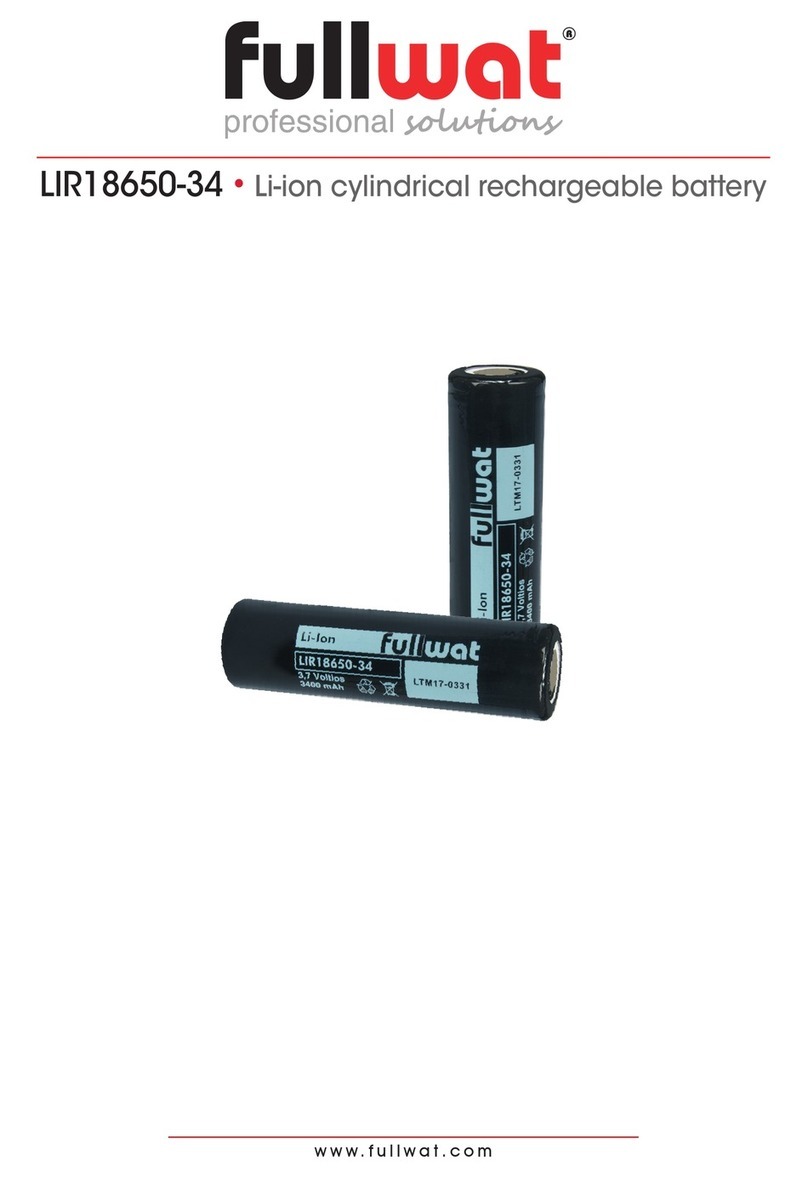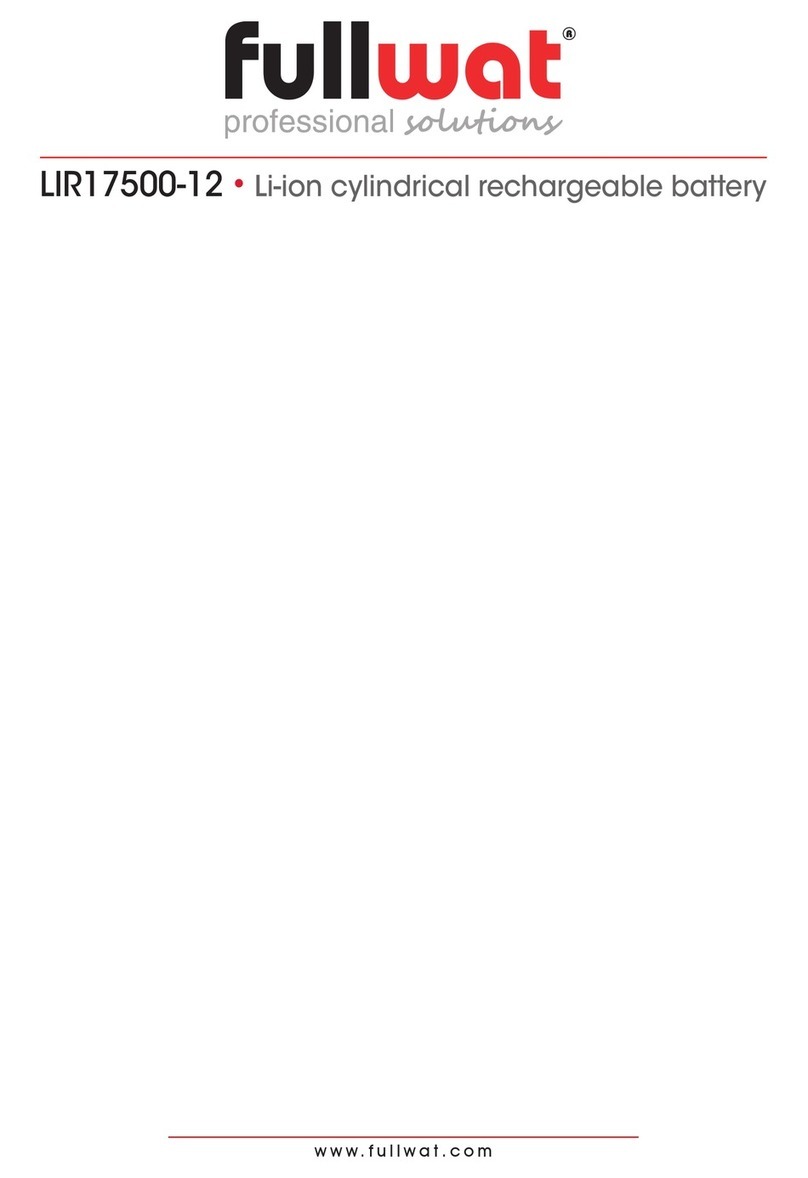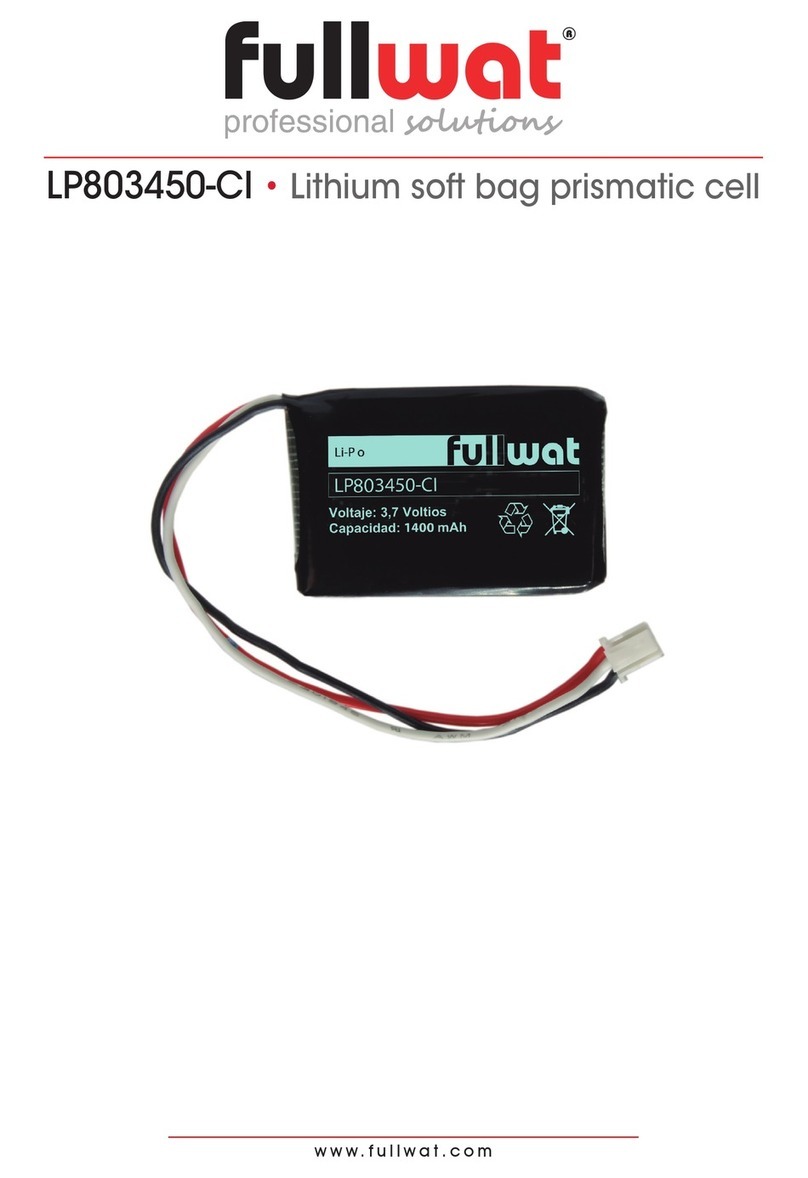
LIR18650R-25 •Li-ion cylindrical rechargeable battery
5.4MechanicalCharacteristics
NO. Item Criteria Testingmethod
5.4.1 Vibration There shall be no
electrolyte leakage
After standard fully charge, cell shall be attached to a vibration
table directly and subjected to vibration that consists of 10 Hz to
55 Hz to 10 Hz at the speed of 1Hz/min in 90~100mins.The total
excursion of the vibration is 0.8mm(0.060 inches). The cell shall
be vibrated in each direction along axis of the cylinder and the
vertical directions of axis of the cylinder.
5.5Safetycharacteristics
NO. Item Criteria Testingmethod
5.5.1 Overcharge No leakage,
No ame,
No re,
No explosion
The cell is discharged according to the standard discharge method.
Apply a 1C Constant current 12V constant voltagecharge for 1.5h.
5.5.2 130ºC
Hot oven
Testing
No re,
No explosion
After fully charging the cellfollowing the standard charge method and
put in the oven. And then the oven temperature will be ramped at 5ºC
per minute to 130ºC, When the temperature of the oven reach 130ºC,
the cell is maintained in the 130ºC oven for 60 minutes or until re or
explosion is obtained and Record the time that the cell temperature
reaches 130ºC and the time when a re or explosion occurs.
5.5.3 Crush
testing
No re,
No explosion
After fully charging the cellfollowing the standard charge method and
Put itbetween two at surfaces for a Crush Test.The direction of the
crushing force shall be vertical to axis of the cylinder.Using a pressure
device which has a 32mm diameter Hydraulic piston with 13 KN
Crushing force, Release the pressure immediately until the maximum
is reached.
5.5.4 Over-disch
arge test
No re,
No explosion
After standard charge, is to be over-discharged with 0.2C to 250%of
capacity.
5.5.5 Short circuit
testing
No re, No
explosion
Cell shall rst be charged according to standard charge method,
and then cellis to be short-circuited by connecting the positive and
negative terminals of the cell with copper wire having a maximum
resistance load of 50mΩ. This test is done at room temperature.
Monitor the cell temperature while testing. The cell is continuously
discharged until the cell case temperature has returned to be 10ºC
less then peak temperature.
5.5.6 Free falling
(drop)
No re, No
explosion
Each fully charged cell is dropped three times from a height of
1,0 m onto aconcrete oor. The cells are dropped so as to obtain
impacts in randomorientations.
Note: All above safety tests will be conducted at 25±3ºC except where specied differently. Use proper ventilation
with protective equipment.
































